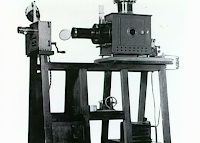Unit 31 Computer
Animation
Task 1A - Explain different types of
animation
Lee Mercer
30/09/2013
Animation
Animation is a collection of still images that are put together in a way that shows them quickly one after another giving the illusion of fluid movement to the viewer. There are many different ways of recreating this through either computer programs or more traditional methods such as stop motion.
A common method of animation is the stop motion method of animation, this is used in television programs like Wallace and Gromit.
Two traditional methods of animation
The first method of animation I am going to talk about was pioneered by two brothers. Auguste and Louis Lumière were the pioneers of film making, they started off working at their father’s photography firm in France and soon after their fathers retirement they began to create moving pictures.
The first film screening was a private screening unlike the ones we have today was a private screening and was held in 1895 it was only shown to a few people. The first public admission of this film was held in the Salon Indien du Grand Café which is in Paris, It consisted of ten short films the first of which was titled Sortie des Usines Lumière à Lyon which translates into English as Workers Leaving the Lumière Factory. This was the first film ever to be created and consisted of about 17 meters of film which was wound through a projector by hand.

The second method of I am going to look at is the Kinetoscope which was created by Thomas Edison in 1888. Though Edison created the Kinetoscope it was largely designed by his employee William Dickson and was designed between the years of 1889 and 1892. The first exhibiton of motion picture took place on April 14, 1894 it took ten individual Kinetoscope’s to show.
Over the course of 1895 it became obvious to Edison that the Kinetoscope was going to lose sales against the projection methods of the Lumière brothers and after the second year of the motion picture methods being out the sales went down almost 90%. This is when Edison moved his attention to trying to project his animation; He then helped create the Vitascope which he hoped would be better than the projector of the Lumière brothers.
Computer animation techniques
Times have moved on from the times where pictures would be manually dragged through a projector to create motion now we have technology that could show the illusion of motion. Common programs that create this are Flash, Scratch or Sony After effects.
Most cinema movies now have some animation in and this method was pioneered by James Cameron who created the movie Avatar, this movie was the first of many now to use a camera with two lenses to give the user the image of 3D.
Motion is created by the view of frames. Frames are shown at a speed usually of about 30 per second and this using the eyes ability to imprint an image for a split second can give the illusion on fluid movement. Some of the common methods to create the effect of motion are Tweening, Morphing and masking;
Tweening
The term Tweening is short for in-betweening and is the name given to the process of adding intermediate frames in between two images. This method can give the first image the illusion that it is slowly evolving into the second.
Morphing
Morphing is the term used to describe seamless transition between two frames in an animation. Although we use computers to do this now it was previously done by cross-fading the images on a film reel.
Masking
Is the method of covering part of an image or scene to later add something into it. This again is done mainly by computers now but used to be done with methods like Chromakey.
Below is an image from a large animated series called Final Fantasy: The spirits Within. This animation was created using computers and looks like a normal film but is made wholly of animation and is one of the most realistic animations on the market.
No comments:
Post a Comment